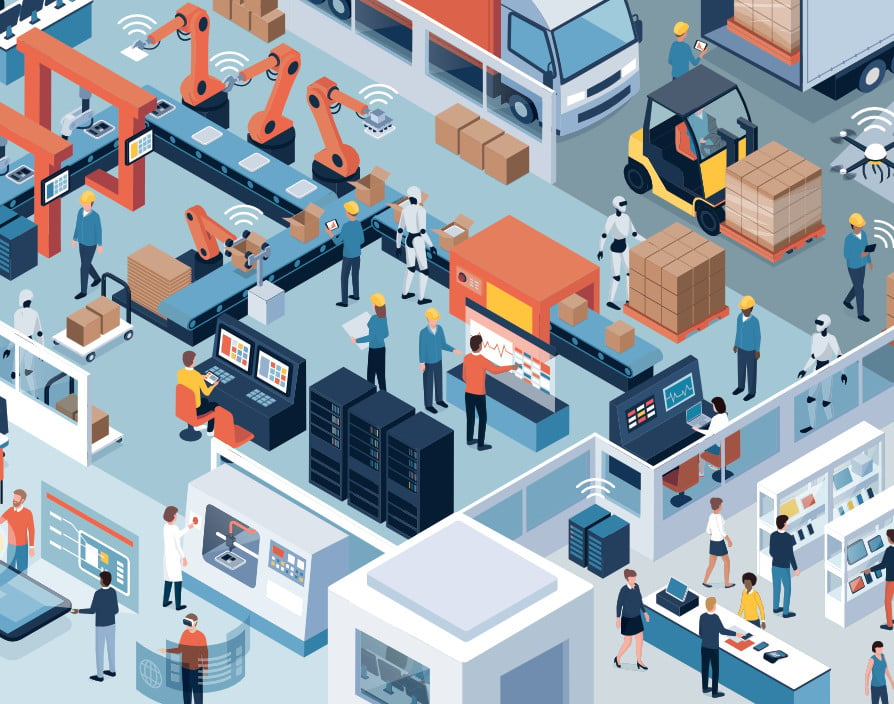Major drivers of transformation, such as Artificial Intelligence (AI), cloud computing, IoT, and automation, have re-moulded the technology sector considerably over the last decade – accelerated further by the Covid-19 pandemic. Indeed, the World Economic Forum has forecasted that by 2025, half of all work tasks will be handled by machines – creating 97 million jobs worldwide, but destroying almost as many.
Whilst increased automation will vastly improve the efficiency of existing jobs, prompting job transformation and creation over the coming years, this places a considerable strain on the existing skills gap and the roles that will become increasingly redundant.
The fact of the matter is, an estimated 65% of children entering primary school today will ultimately end up working in completely new job types that don’t yet exist – meaning organisations will need to proactively manage reskilling and transformation initiatives while the window of opportunity remains.
Adapting to the digital age
Technology has had a profound impact on the job market over the last decade: characterised by a revolving amalgamation of job losses, job creation, and job transformation. Agata Nowakowska, Area Vice President at Skillsoft explains that whilst automation through AI and Machine Learning will impact millions of jobs across the globe, presenting a risk to employees who lack digital skills and proficiencies – not everyone is at equal risk of being replaced by a robot. Twice as many women than men are likely to lose their jobs as automation replaces human labour, as roles most susceptible to automation include data processing jobs – such as cashiers or receptionists.
Nowakowska suggests, employers need to ensure everyone, regardless of gender, age, or location, shares in the spoils of new technology. This means taking a comprehensive approach to reskilling, upskilling, and job transitioning – cultivating a flexible learning culture which provides employees the opportunity to learn new skills through lifelong learning initiatives.
Opportunities to flourish
Businesses have certainly had to adapt and find ways to work around the impact of COVID-19, and technology has been the key enabler. For many organisations, the pandemic has been a catalyst for change – with three years worth of digital progress happening in the first three months. Animesh Chowdhury, Founder & CTO at Goodtill describes how process automation has been central to these changes, helping businesses increase efficiencies and ensure reduced staffing levels can cope with changing demands.
Machines replacing humans is a tough pill to swallow – but this is often not the case at all. While unfortunately the pandemic has forced many business leaders to reduce staffing levels, in many other industries, such as hospitality and food and drink, new automation technologies are actually saving jobs, rather than taking them.
Pubs and restaurants, for example, are some of the most restricted businesses during lockdown periods and can no longer welcome guests on site. But tools like intuitive, Electronic Point of Sale (EPOS) apps have given these businesses the ability to pivot their services – facilitating delivery, click and collect and new revenue streams that allow staff to work amid government restrictions.
With the second lockdown now in effect, many hospitality businesses are wondering how they will keep afloat, but with the simple introduction of an automated delivery or collection app, they can still provide their service without breaking lockdown measures. The ‘robot takeover’ is extremely positive – for many businesses it won’t only mean they will survive, they will thrive.
Workers are apprehensive
Samantha Humphries, security strategist at Exabeam, agrees that automation provides opportunities for growth in the cybersecurity industry:
According to Exabeam’s 2020 Cybersecurity Professionals Salary, Skills and Stress Report, 88% of cybersecurity professionals believe automation will make their jobs easier – simplifying cybersecurity work, helping to reduce response times, and bolstering defence. However, whilst automation improves business productivity and outcomes, there is the growing concern that people will become displaced by machines in the workplace – indeed almost half of workers believe automation is a threat to their jobs.
Humphries suggests, security leaders should reassure staff members that automation improves outcomes and provides advancement opportunities, rather than eliminating jobs. For example, with machines replacing lower-value activities, such as data inputting, employees are able to focus on managing high profile strategic projects.
By investing in employee training, workforces are able to develop agile workers and create new job opportunities – who are able to embrace, rather than fear, emerging technologies.”
Investing in skills development
This is especially important as according to the CBI, nine in ten workers will need to learn new skills or be retrained entirely over the next decade, with 21 million Britons currently lacking ‘basic digital skills’.
Now is the time to bridge the gap between the new technologies and roles they’ll create, and the workers we need to fulfil them, advises Martin Taylor, Deputy CEO & Co-Founder at Content Guru. Although this digital skills gap existed before the pandemic hit, it has been brought into even clearer focus by COVID-19. One of the effects of the pandemic has been to fast-track automation and artificial intelligence technologies as a matter of necessity in industries everywhere ‘ and nowhere more so than the contact centre sector, where some 1.4 million Britons currently work. Advancements in automation, AI and Natural Language Processing are opening up new and entirely more fulfilling contact centre roles for humans ‘ provided those humans are ready and able to play their part. I’m a firm believer in the idea that AI should assist human contact centre workers, rather than replace them.
Greater efficiency
This is also true in the B2B sales industry, where Gartner predicts 80% of interactions between suppliers and buyers will occur in digital channels by 2025. Richard Buxton, Director, N4 Engage concludes: Utilising the latest in AI and ML technology not only delivers information in a timely, accurate, slick, and repeatable way, but is also sophisticated enough that communications can transition from a bot to a human seamlessly, without losing that feeling of a human interaction.
He continues, with COVID-19 as an accelerant, the workforce is moving from a service role to a development/technology role, and so businesses need to focus efforts on building advanced technology skills. To be clear, bots aren’t right in every case. COVID-19 has increased the need for human interaction, as people are likely more emotionally charged and will look to humans who understand emotion, there’s limited face to face contact allowed day to day so those feeling isolated may prefer real human interaction over automated bots. But, we still need automation to be able to answer the simple questions such as ‘I want a refund’ or ‘where is my order’, and we will continue to see this accelerate as the pandemic shapes a new digital age.
‘The robot revolution’ has become increasingly topical over the past decade, with both employers and employees apprehensive of what an automated workplace really means. However, whilst it is inevitable some jobs will be replaced by machines, the ‘robot revolution’ also offers opportunities for job transformation, creation and growth. In this increasingly digital age, employers need to ensure they are best prepared to adopt an agile mindset, embrace technological offerings and commit to a future workplace that is human at heart.
“
Share via:


















































